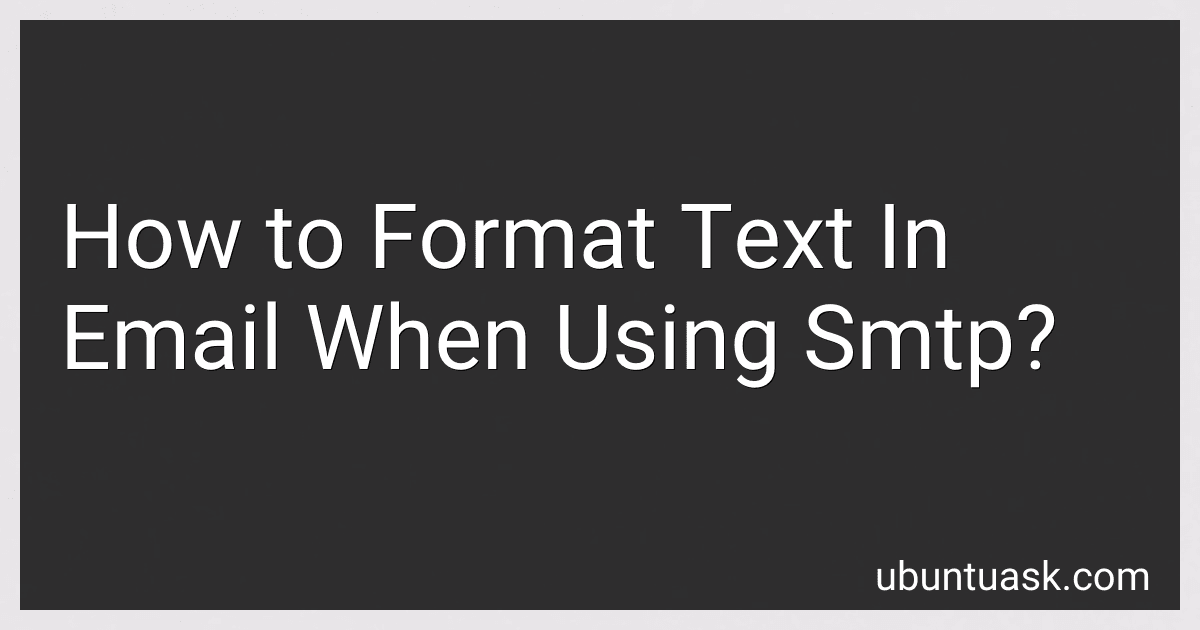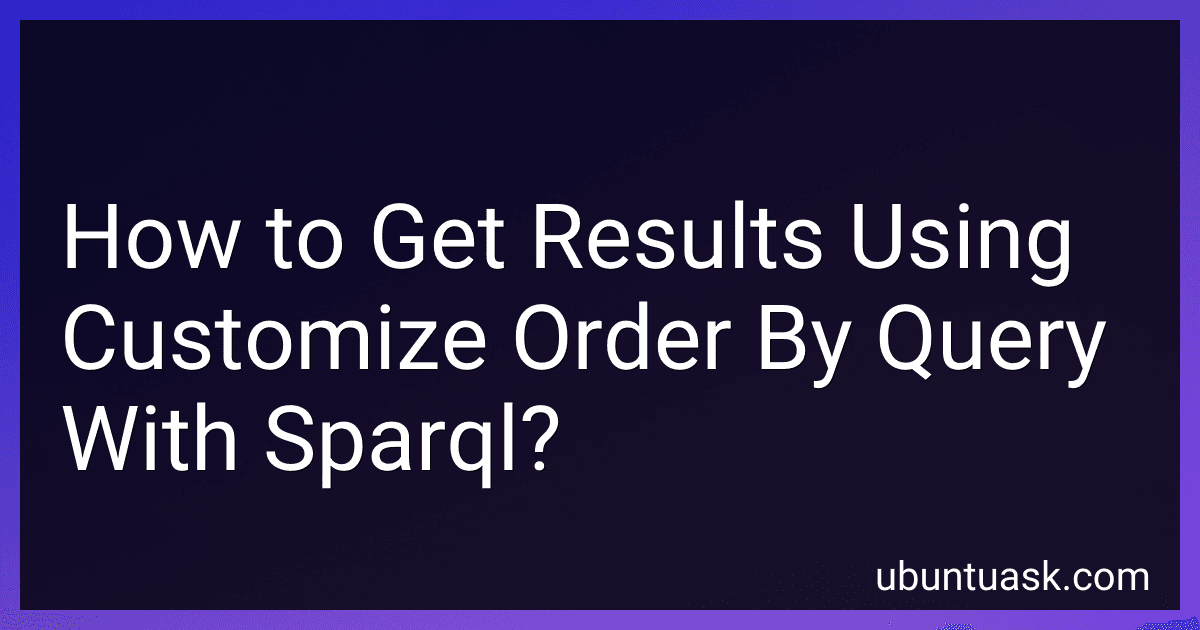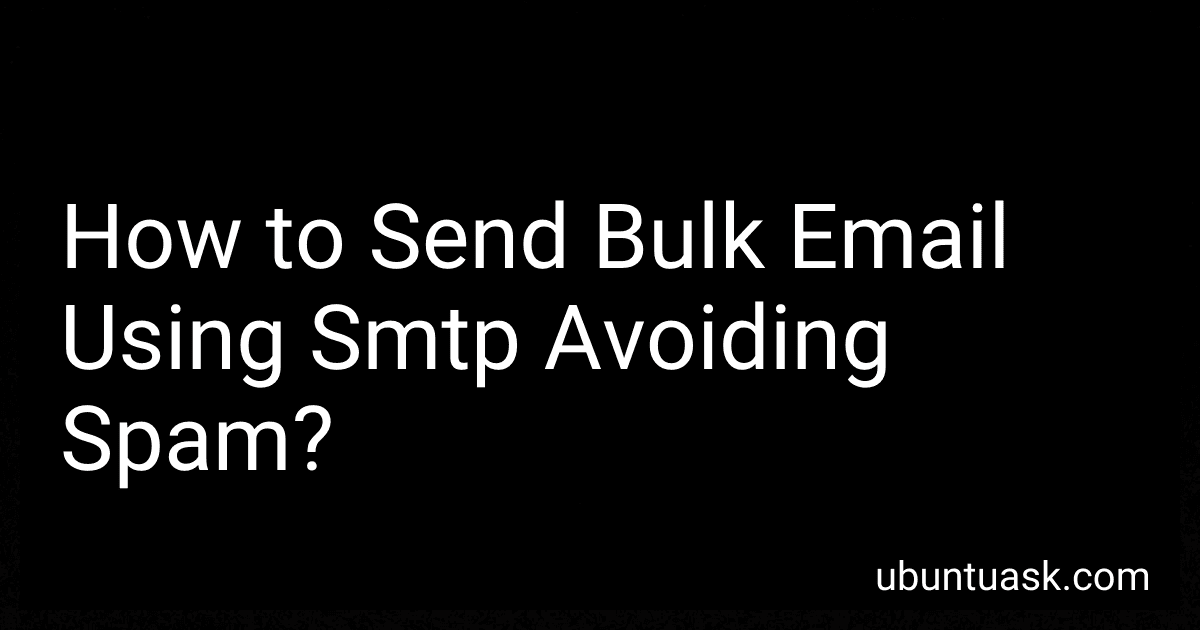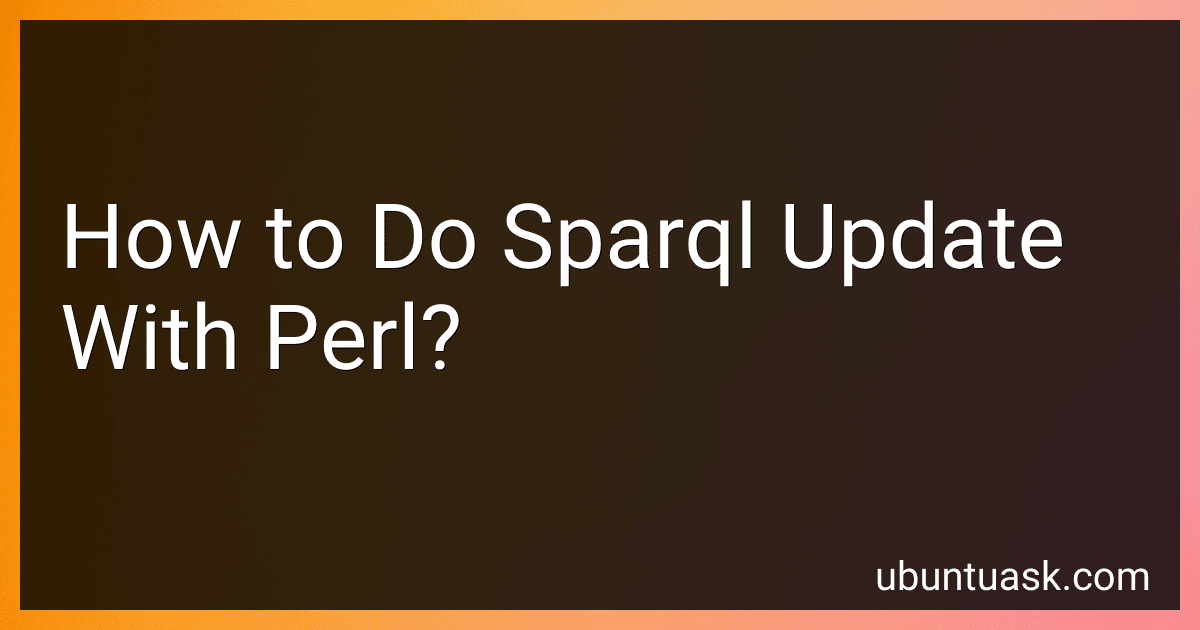Posts (page 45)
-
 5 min readIn SPARQL, you can ignore specific values by using the keyword "FILTER". You can use this keyword to create a condition that excludes certain values from your query results. For example, if you want to retrieve all subjects from your dataset except for a specific subject, you can write a FILTER statement that specifies the subject to be ignored. This allows you to customize your query results and focus only on the data that is relevant to your needs.
5 min readIn SPARQL, you can ignore specific values by using the keyword "FILTER". You can use this keyword to create a condition that excludes certain values from your query results. For example, if you want to retrieve all subjects from your dataset except for a specific subject, you can write a FILTER statement that specifies the subject to be ignored. This allows you to customize your query results and focus only on the data that is relevant to your needs.
-
 4 min readWhen sending an email using Simple Mail Transfer Protocol (SMTP), you can format the text by including HTML tags in the body of the email. This allows you to add styling such as bold, italic, underline, changing font size and color, creating hyperlinks, and adding images. However, it's important to keep in mind that the recipient's email client may not support HTML formatting, so it's best to keep the formatting simple and easy to read.
4 min readWhen sending an email using Simple Mail Transfer Protocol (SMTP), you can format the text by including HTML tags in the body of the email. This allows you to add styling such as bold, italic, underline, changing font size and color, creating hyperlinks, and adding images. However, it's important to keep in mind that the recipient's email client may not support HTML formatting, so it's best to keep the formatting simple and easy to read.
-
 5 min readThe SMTP 'NOOP' command is used as a way for the client to communicate with the server without actually sending any email data. It stands for "No Operation" and is often used as a keep-alive message to ensure that the connection between the client and server remains active. It can also be used to check the status of the connection or to verify that the server is still responsive.
5 min readThe SMTP 'NOOP' command is used as a way for the client to communicate with the server without actually sending any email data. It stands for "No Operation" and is often used as a keep-alive message to ensure that the connection between the client and server remains active. It can also be used to check the status of the connection or to verify that the server is still responsive.
-
 5 min readTo run a SPARQL spatial query, you can use a SPARQL endpoint that supports spatial operations. First, you need to make sure that your data includes spatial information, such as latitude and longitude coordinates for locations. In your SPARQL query, you can use the GeoSPARQL extension to perform spatial operations like finding points within a certain distance from a specified location, or finding geometries that intersect with a given polygon.
5 min readTo run a SPARQL spatial query, you can use a SPARQL endpoint that supports spatial operations. First, you need to make sure that your data includes spatial information, such as latitude and longitude coordinates for locations. In your SPARQL query, you can use the GeoSPARQL extension to perform spatial operations like finding points within a certain distance from a specified location, or finding geometries that intersect with a given polygon.
-
 6 min readTo send SMTP mail in CakePHP, you can use the built-in Email component. First, make sure you have configured your email settings in the app.php file. Next, load the Email component in your controller by adding 'Email' to the components array. Then, create a new Email object and configure the sender, recipient, subject, and body of the email. Finally, use the send method to send the email using SMTP. Make sure to handle any errors that may occur during the sending process.
6 min readTo send SMTP mail in CakePHP, you can use the built-in Email component. First, make sure you have configured your email settings in the app.php file. Next, load the Email component in your controller by adding 'Email' to the components array. Then, create a new Email object and configure the sender, recipient, subject, and body of the email. Finally, use the send method to send the email using SMTP. Make sure to handle any errors that may occur during the sending process.
-
 4 min readTo get results using a customized ORDER BY query with SPARQL, you can use the ORDER BY clause in your SPARQL query to sort the results based on specific criteria. This allows you to customize the order in which the results are returned based on your requirements. By specifying the variables you want to order the results by and the sorting direction (ASC or DESC), you can tailor the sorting of the results to suit your needs.
4 min readTo get results using a customized ORDER BY query with SPARQL, you can use the ORDER BY clause in your SPARQL query to sort the results based on specific criteria. This allows you to customize the order in which the results are returned based on your requirements. By specifying the variables you want to order the results by and the sorting direction (ASC or DESC), you can tailor the sorting of the results to suit your needs.
-
 6 min readTo avoid sending base64 encoded emails in SMTP, one can ensure that the email content does not contain any attachments or images that need to be encoded. Instead, keep the email content as plain text or HTML without any binary data. Additionally, consider using a different encoding method such as quoted-printable or sending the binary data as separate attachments rather than embedding them in the email body.
6 min readTo avoid sending base64 encoded emails in SMTP, one can ensure that the email content does not contain any attachments or images that need to be encoded. Instead, keep the email content as plain text or HTML without any binary data. Additionally, consider using a different encoding method such as quoted-printable or sending the binary data as separate attachments rather than embedding them in the email body.
-
 7 min readTo translate a SPARQL query into English, you first need to understand the structure and syntax of the query. SPARQL is a query language for querying RDF (Resource Description Framework) data. To translate a SPARQL query, you will need to break down the query into its individual components: SELECT, WHERE, FILTER, and other clauses.Start by identifying the SELECT clause, which specifies the variables that you want to retrieve in the query results.
7 min readTo translate a SPARQL query into English, you first need to understand the structure and syntax of the query. SPARQL is a query language for querying RDF (Resource Description Framework) data. To translate a SPARQL query, you will need to break down the query into its individual components: SELECT, WHERE, FILTER, and other clauses.Start by identifying the SELECT clause, which specifies the variables that you want to retrieve in the query results.
-
 7 min readSending bulk emails using SMTP can be a tricky process, as many email providers have strict policies in place to prevent spam. To avoid being marked as spam, there are several steps you can take. First, make sure you have permission from the recipients to send them emails. This can be done through an opt-in process on your website or other forms of consent. Additionally, ensure that your email content is relevant and valuable to the recipients.
7 min readSending bulk emails using SMTP can be a tricky process, as many email providers have strict policies in place to prevent spam. To avoid being marked as spam, there are several steps you can take. First, make sure you have permission from the recipients to send them emails. This can be done through an opt-in process on your website or other forms of consent. Additionally, ensure that your email content is relevant and valuable to the recipients.
-
 4 min readTo perform SPARQL update with Perl, you can use the RDF::Query module, which provides tools for executing SPARQL queries against RDF data. First, you need to establish a connection to the SPARQL endpoint using the RDF::Query::Client module. Then, you can construct your SPARQL Update query as a string and execute it using the update method of the RDF::Query::Client object. Remember to handle any errors that may occur during the query execution.
4 min readTo perform SPARQL update with Perl, you can use the RDF::Query module, which provides tools for executing SPARQL queries against RDF data. First, you need to establish a connection to the SPARQL endpoint using the RDF::Query::Client module. Then, you can construct your SPARQL Update query as a string and execute it using the update method of the RDF::Query::Client object. Remember to handle any errors that may occur during the query execution.
-
 4 min readTo send an email through SMTP, you will need to have an SMTP server set up and configured with the appropriate settings. Once you have these details, you can use an email client or a programming language like Python to connect to the SMTP server and send the email. You will need to provide the server address, port number, authentication information, and the email content including the recipient's email address, subject, and body.
4 min readTo send an email through SMTP, you will need to have an SMTP server set up and configured with the appropriate settings. Once you have these details, you can use an email client or a programming language like Python to connect to the SMTP server and send the email. You will need to provide the server address, port number, authentication information, and the email content including the recipient's email address, subject, and body.
-
 4 min readTo send an email with SMTP in PHP, you can use the built-in PHP mail() function or use a third-party library like PHPMailer.First, you will need to establish a connection to an SMTP server using the appropriate credentials (server address, port number, username, and password).Next, you can use the SMTP configuration settings in your PHP script to set up the email message (sender, recipient, subject, body, attachments, etc.).
4 min readTo send an email with SMTP in PHP, you can use the built-in PHP mail() function or use a third-party library like PHPMailer.First, you will need to establish a connection to an SMTP server using the appropriate credentials (server address, port number, username, and password).Next, you can use the SMTP configuration settings in your PHP script to set up the email message (sender, recipient, subject, body, attachments, etc.).